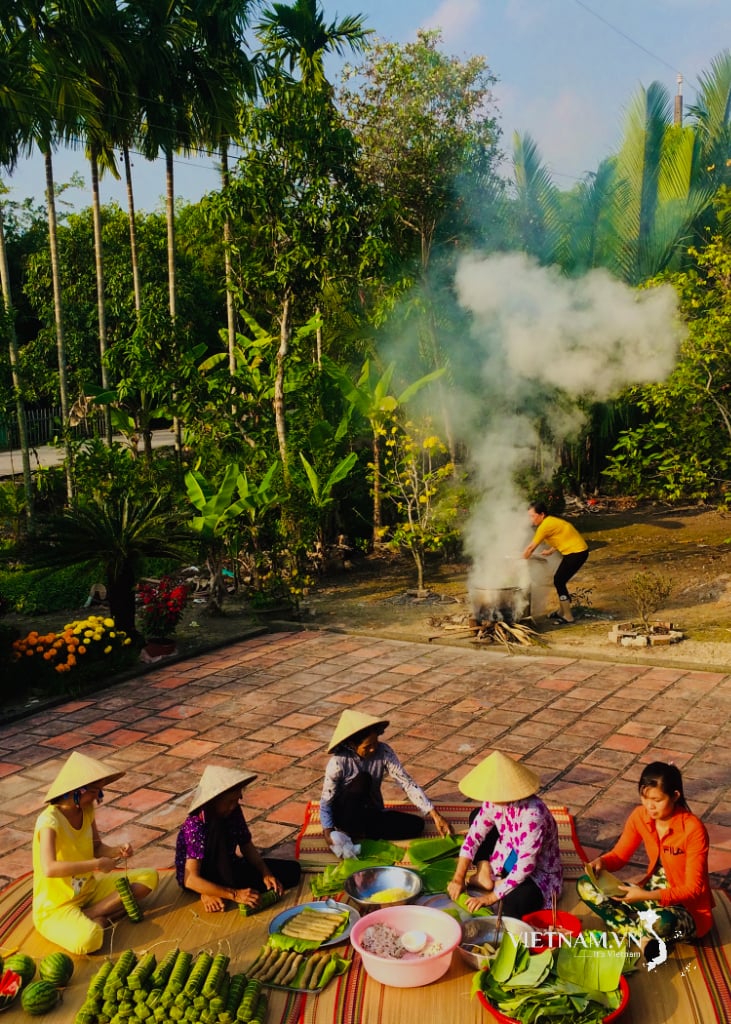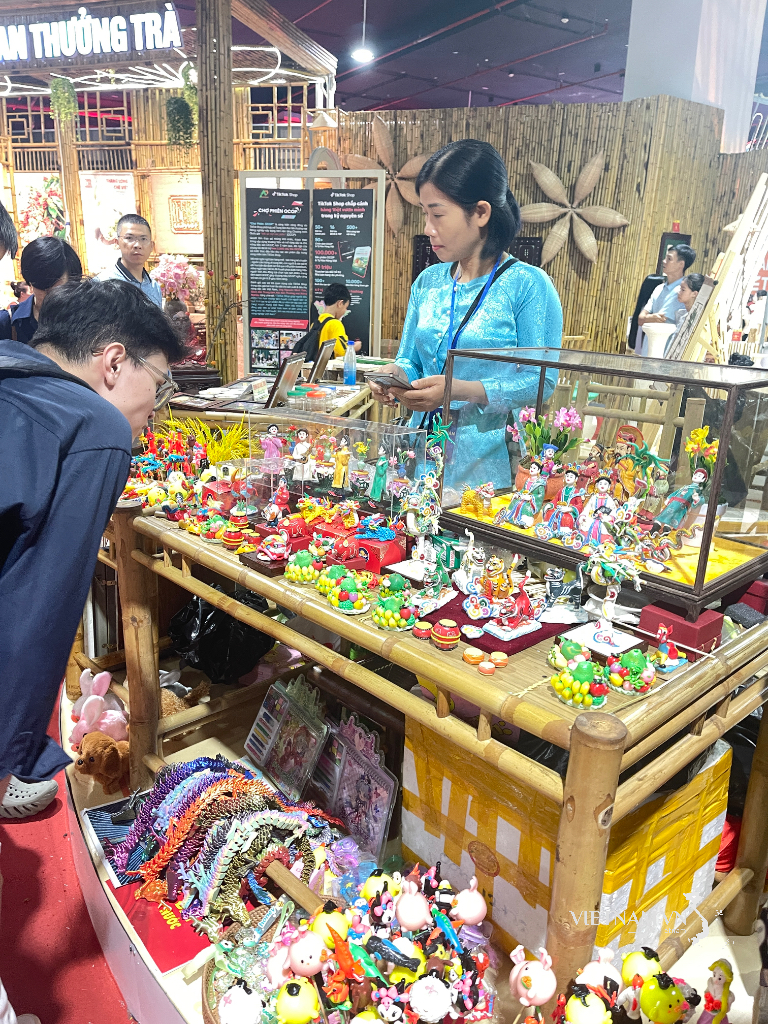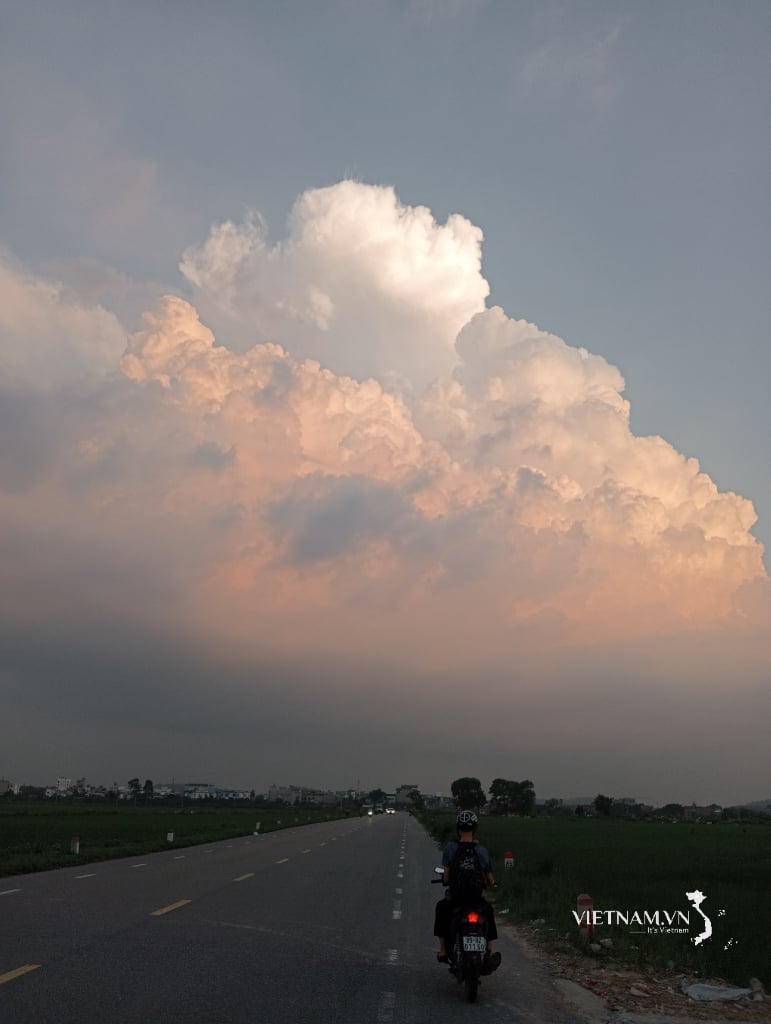Rethinking the concept from place names to cultural indicators.
Instead of relying on familiar place names, OCOP products are encouraged to build brands based on core values, culture, and unique stories, thereby expanding sustainable markets and preparing to conquer international markets.
Changes in administrative boundaries have caused considerable concern for cooperatives and OCOP producers, especially when product names have become associated with the old geographical location.

OCOP products retain their local essence despite changes in administrative boundaries. Photo: Truc Mai.
However, according to experts, this is precisely the impetus for producers to break free from the "shadow" of the administrative name and move to a more effective brand positioning method. Instead of simply being "Lai Vung Pink Tangerine," the product can tell the story of "Dong Thap Pink Tangerine - the sweetness of the Mekong River's alluvial soil."
Mr. Luu Van Tin, Director of the Lai Vung Pink Tangerine Cooperative, shared that consumers often remember pink tangerines from Lai Vung (Dong Thap) or custard apples from Ba Den Mountain ( Tay Ninh ). This dependence has created a habit but also poses a risk when changes occur.
At the same time, mergers provide an opportunity for cooperatives to focus on promoting their products through unique stories and cultural values. This approach not only enriches the brand but also creates a strong emotional appeal for consumers, thereby building more lasting trust.
Administrative mergers open up a larger space where OCOP products must compete with a range of other products in the same new area. This requires businesses to professionalize, improve product quality, and enhance management capabilities.
Mr. Dang Tuong Khanh, Director of Trong Duc Cocoa Company, affirmed that value chain linkage is extremely necessary. From the beginning, the company determined that it could not develop without a linked chain. Owning a large raw material area helps businesses proactively manage production volume, improve quality, and facilitate exports.
In addition, investing in technology and deep processing is also a key factor in increasing the value of OCOP products. Mr. Nguyen Van Khon, Director of Tam Tam An Medicinal Herbs Company, is a prime example of integrated production, investment in deep processing, and traceability to elevate product quality.
Take advantage of export opportunities and tourism development.
The merger not only helps OCOP products expand their domestic market but also creates a requirement for higher standards to be met for export. In the newly merged provinces with greater resources, OCOP products can be closely linked with the tourism, cultural, and export sectors.

The merger of administrative boundaries opens up opportunities for broader promotion of OCOP brands. Photo: Truc Mai.
OCOP products can become part of experiential tourism. Tourists visiting new areas can not only shop but also visit farms and agricultural production sites, learning more about the process and culture behind the products. This both promotes the products and generates additional income for the local people.
Mr. Nguyen Lam Vien, Chairman of the Board of Directors of Vinamit, emphasized that the merger is a driving force for OCOP businesses to build brands more professionally. Instead of just selling products, we must sell the story. The story of the land, the people, and the cultural values will be the decisive factor in differentiating and helping OCOP products overcome geographical barriers. This is the 'passport' that helps Vietnamese agricultural products reach the world.
According to Ms. Vu Kim Hanh, President of the Association of High-Quality Vietnamese Goods Businesses, mergers are not just about consolidation but also an opportunity for OCOP (One Commune One Product) entities to standardize production processes. International standards such as GlobalGAP and HACCP are no longer optional but mandatory requirements to ensure food quality and safety. This not only helps products overcome technical barriers in international markets but also builds lasting trust with global consumers.
In related developments, Mr. Tran Thanh Hai, Deputy Director of the Import-Export Department (Ministry of Industry and Trade), analyzed that mergers create stronger supply chains with abundant and stable raw materials. OCOP (One Commune One Product) entities need to cooperate to create large production volumes to meet export orders. Instead of manual production, we must shift to industrial production, using advanced processing technology to enhance product value. This is the only way to take Vietnamese agricultural products further and create a solid position on the world trade map.
For example, in the newly established Dong Nai province, with its familiar 5-star OCOP products meeting export standards, smaller businesses will face pressure to upgrade their scale and quality.
Despite the abundant opportunities, the challenges are also significant. After the merger, a province like Lam Dong now has over 600 OCOP products, creating intense competition. Small-scale businesses face competition from more professional, larger-scale models. The biggest obstacle currently is the disparity in production levels, management capabilities, and market experience.
According to economic experts, to overcome these obstacles, stakeholders need to focus on targeted solutions. Specifically, OCOP (One Commune One Product) entities need support to improve their adaptability, learn management and marketing experience. In addition, the OCOP program management system in newly established provinces needs to be restructured, forming key OCOP zones based on the unique advantages of each existing province.
At the same time, the use of electronic traceability labels, investment in packaging, and product design should not only be aesthetically pleasing but also tell the product's story and highlight local cultural identity.
Source: https://nongnghiepmoitruong.vn/doi-moi-tu-duy-de-ocop-vuon-xa-toan-cau-d778342.html















































































































Comment (0)